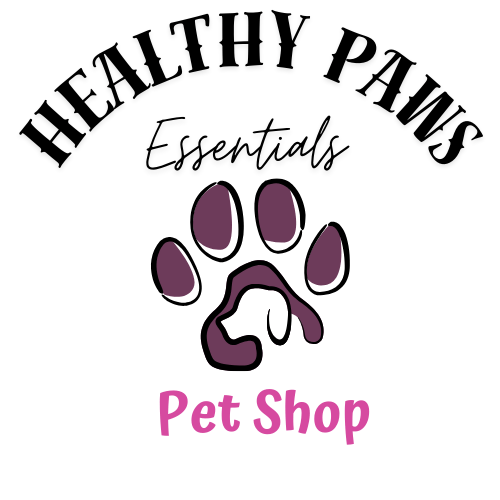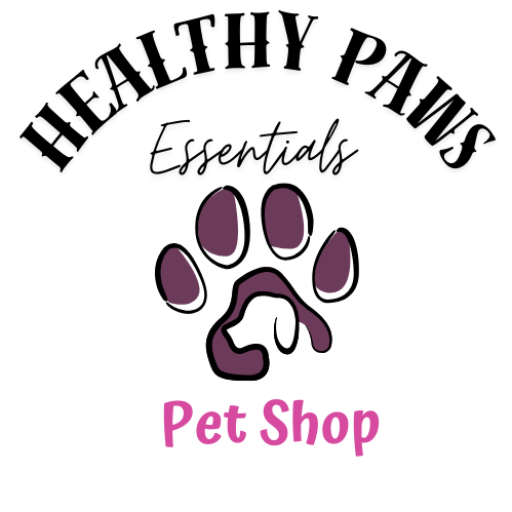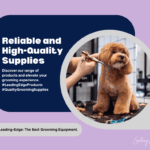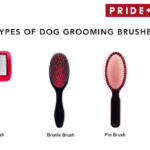
Choosing the right grooming tools for your dog is an essential part of ensuring their overall health and well-being. When selecting these tools, it’s important to consider the specific needs of your canine companion, such as their breed, coat type, and any health concerns. Consulting with your veterinarian can provide valuable insights into what tools best support your dog’s grooming regimen. High-quality grooming tools not only make the grooming process more efficient but also help maintain healthy skin, coat, and teeth. Whether you’re dealing with a young pup or a senior dog, proper grooming plays a crucial role in their health and happiness. Have you ever stood in the pet aisle, overwhelmed by the sheer number of grooming tools available and wondered, “What should I consider when choosing grooming tools for my dog?” Picking the right grooming tools for your furry friend can be a bit daunting, given the unique needs of different breeds and health considerations. Fear not, because by the end of this article, you’ll have a much clearer idea of what’s best for your dog.

Understanding Your Dog’s Unique Needs
Not all dogs are created equal, especially when it comes to grooming. Your dog’s breed, size, age, and overall health play significant roles in determining which grooming tools will be most effective and safe.
Breed-Specific Needs
Different breeds have unique grooming needs. For instance, a Poodle’s curly coat requires different grooming tools compared to a Labrador’s short fur. Familiarizing yourself with your dog’s breed-specific needs can guide you in choosing the most suitable tools.
Health Considerations
Your dog’s health, particularly skin and coat condition, dental health, and joint health, can significantly influence your grooming choices. If your dog has sensitive skin, you’ll need more gentle brushes and hypoallergenic shampoos. Dogs with dental issues might benefit from specialized toothpaste and brushes.
Essential Grooming Tools
Whether you’re a new dog owner or an experienced one, having a go-to list of essential grooming tools is crucial. Here’s what you generally need:
| Grooming Tool | Purpose |
|---|---|
| Brush/Comb | Removes tangles, mats, and loose fur |
| Nail Clippers | Keeps nails trimmed and prevents overgrowth |
| Shampoo/Conditioner | Cleans and maintains healthy skin and coat |
| Toothbrush/Toothpaste | Promotes good dental health |
| Ear Cleaner | Prevents ear infections and wax buildup |
| Clippers/Scissors | Handy for trimming fur and paws |
| Grooming Table | Provides a safe space to groom your dog |
Brushes and Combs
Selecting the right brush or comb depends largely on your dog’s coat type. Here are a few common types:
- Slicker Brushes: Great for removing mats and tangles.
- Bristle Brushes: Good for short-haired dogs to remove loose fur.
- Pin Brushes: Ideal for dogs with longer hair.
- Combs: Perfect for detailing and removing remaining tangles.
Nail Clippers
Regular nail trimming is vital to prevent overgrowth and related issues. There are two main types:
- Guillotine Clippers: Best for small to medium-sized dogs.
- Scissor Clippers: Effective for large dogs or dogs with thick nails.
Shampoos and Conditioners
Choosing the right shampoo and conditioner helps maintain a healthy coat. Look for products that cater to any specific skin conditions your dog may have—hypoallergenic for sensitive skin, or moisturizing for dry skin.
Dental Health Products
Don’t overlook dental health! Opt for dog-specific toothbrushes and toothpaste. Many are flavored to make the brushing experience more enjoyable for your pooch.
Ear Cleaners
Regular ear cleaning helps prevent infections and removes wax build-up. Choose a gentle, vet-approved ear cleaner.
Clippers and Scissors
For breeds that need regular haircuts, investing in quality clippers and scissors can make a world of difference. Ensure they’re sharp and safe for use on pets.
Grooming Table
While not an absolute necessity, a grooming table can be a game-changer, providing both safety and convenience for you and your dog during grooming sessions.

Health and Well-Being
Your dog’s grooming routine goes beyond aesthetics; it’s crucial for their overall health and well-being. Regular grooming can help detect early signs of health issues, improve joint health, and maintain a healthy skin and coat.
Skin and Coat Health
Regular brushing helps distribute natural oils, reducing the risk of dry skin and maintaining a beautiful, shiny coat. It’s essential to use a brush suited to your dog’s coat to avoid causing irritation.
Joint Health
Keeping your dog’s nails trimmed and their fur short around the paws can support better balance and joint health. Overgrown nails can cause discomfort and lead to joint problems over time.
Dental Health
Using specialized dog toothbrushes and toothpaste aids in preventing dental diseases. Remember, dogs can’t tell you if they have a toothache, so regular brushing is key to maintaining good oral health.
Diet and Supplementation
A balanced diet and proper supplementation can have a significant impact on your dog’s skin, coat, and overall health, making grooming easier and more effective.
Dog Food
Choose high-quality dog food tailored to your dog’s breed, age, and health conditions. A well-balanced diet can reduce shedding and promote a healthy coat.
Supplements
Consider adding supplements, such as omega-3 fatty acids, glucosamine, and chondroitin, to your dog’s diet. These supplements can support skin health, joint health, and overall wellbeing.
Probiotics
Probiotics can improve your dog’s digestion and immune system, which can also reflect positively on their skin and coat condition.

Professional Grooming vs. At-Home Grooming
Deciding whether to groom your dog at home or take them to a professional groomer depends on several factors, including your dog’s size, coat type, and your own comfort level and experience with grooming.
Benefits of Professional Grooming
- Expertise: Professional groomers are trained to handle a variety of breeds and coat types.
- Equipment: They have specialized tools and products suitable for different dogs.
- Time-Saving: Perfect for busy dog owners who might not have the time for regular grooming sessions.
At-Home Grooming Benefits
- Bonding: Grooming your dog at home can strengthen your bond.
- Convenience: You can groom your dog at your own pace and according to your schedule.
- Cost-Effective: Over time, grooming at home can save you money.
Combining Both
Many dog owners find a balance between the two, handling basic grooming tasks like brushing and nail trimming at home while scheduling professional grooming sessions every few months.
Tips for Successful Grooming Sessions
Making grooming a positive experience for your dog is essential.
Start Young
Begin grooming your dog at a young age to get them used to the process. Even if you have an older dog, starting as soon as possible can help them become accustomed to grooming routines.
Take It Slow
If your dog is new to grooming, take it slow. Start with short sessions and gradually increase the duration as they become more comfortable.
Use Positive Reinforcement
Reward your dog with treats and praise during and after grooming sessions. This positive reinforcement can make grooming a more pleasant experience for them.
Be Patient
Grooming requires patience, both from you and your dog. If your dog is anxious or fidgety, remain calm and take breaks if needed.
Working with Your Veterinarian
Your veterinarian can be a valuable resource when it comes to choosing grooming tools and developing a grooming routine for your dog. They can provide specific recommendations based on your dog’s health needs and breed requirements.
Veterinary Recommendations
Consult your vet for recommendations on grooming tools and products, especially if your dog has specific health concerns like skin allergies or joint issues.
Regular Check-Ups
Routine veterinary check-ups can help identify any underlying health issues that may affect your grooming choices. Your vet can also guide you on the best diet and supplements to support your dog’s overall health.
Conclusion
Choosing the right grooming tools for your dog is crucial for their health and well-being. By considering your dog’s unique needs, understanding the essentials, focusing on health, and regularly consulting with your vet, you can ensure that your furry friend looks and feels their best.
Remember, grooming is more than just maintaining appearance; it’s about supporting your dog’s overall health and happiness. With the right tools and routine, you can make grooming a pleasant experience for both you and your dog. Happy grooming!







